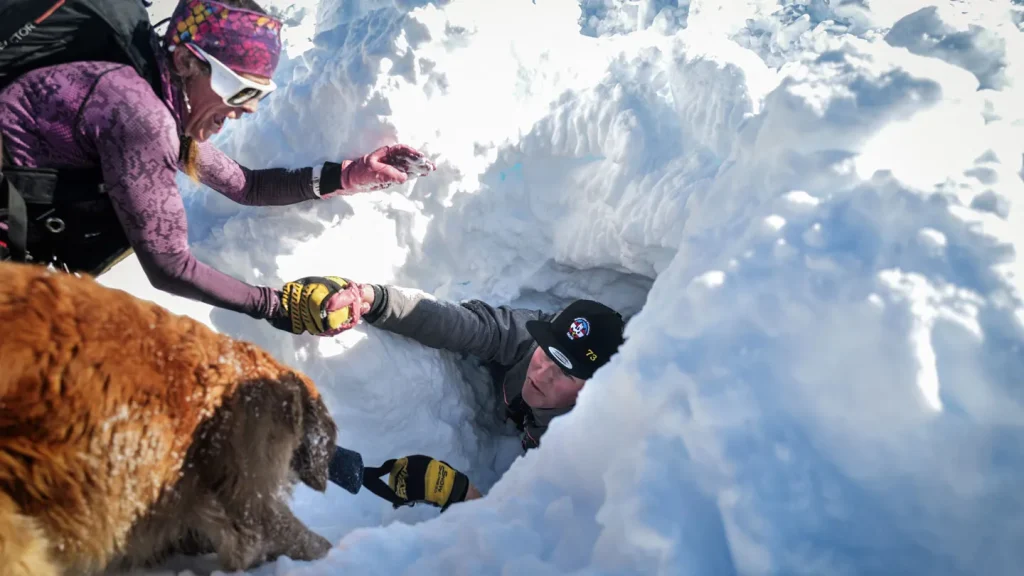Revolutionary Safety Device Could Transform Avalanche Survival Rates
In the race against time following an avalanche burial, a groundbreaking safety device may provide the crucial edge needed to save lives. A recent clinical trial conducted in northern Italy has demonstrated promising results for a new technology designed to extend the survival window for avalanche victims by ensuring they receive adequate oxygen while buried under snow.
When someone becomes trapped beneath an avalanche, oxygen deprivation quickly becomes the greatest threat to survival. The human body begins experiencing dangerous drops in blood oxygen levels within minutes, with the chance of survival decreasing dramatically after just 10 minutes under the snow. Statistics paint a grim picture: approximately two-thirds of victims whose head and chest are trapped under snow will die from insufficient oxygen within 35 minutes. This narrow survival window has long been one of the most challenging aspects of avalanche rescue operations. The innovative solution comes in the form of the Safeback SBX, a lightweight, battery-operated device integrated into a backpack. Weighing just over 500 grams (about one pound), the system uses a fan to draw air from the surrounding snow and channel it directly to the victim’s face through outlets in the backpack’s shoulder straps.
The clinical trial methodology was rigorous and ethically designed to ensure participant safety while testing the device’s effectiveness. Researchers monitored critical health indicators including blood oxygen levels, heart rate, and respiratory rate during controlled burials. Participants were placed face-down under at least 50 centimeters (approximately 18 inches) of snow at a field site, with the experiment set to run for 35 minutes. However, researchers implemented strict safety protocols, immediately ending a burial if a participant’s blood oxygen level dropped below the dangerous threshold of 80 percent. The results revealed a stark contrast between the two test groups. Among the 12 participants using the functional Safeback SBX device, none had to be removed due to dangerously low blood oxygen levels. Eleven of these participants successfully remained buried for the full 35-minute duration, with only one requesting early removal due to unexpected skin irritation rather than oxygen-related concerns.
The control group, using a non-functional “sham” device, experienced dramatically different outcomes. Seven of these 12 participants had to be removed prematurely when their blood oxygen levels fell below the critical 80 percent threshold. An additional four participants requested early termination of their burial: three due to shortness of breath and one because of a panic attack. Most participants in this group could only remain buried for between five and thirteen minutes, with just one individual managing to stay under the snow for the entire 35-minute period. This stark difference in outcomes provides compelling evidence for the device’s effectiveness in maintaining adequate oxygenation during avalanche burial.
The potential impact of this technology extends far beyond laboratory settings. Avalanches claim approximately 100 lives annually across Europe, primarily among skiers and mountain climbers venturing into backcountry areas. In the United States, the death toll from avalanches varies year to year but typically ranges from roughly a dozen to several dozen fatalities annually. These statistics highlight the ongoing risk faced by outdoor enthusiasts and the critical need for improved safety measures. While traditional avalanche safety equipment like beacons, probes, and shovels help rescuers locate and dig out victims, they do nothing to extend the survival window by addressing the immediate problem of oxygen deprivation. The Safeback SBX represents a significant advancement in this area, potentially giving rescue teams precious additional minutes to reach victims before irreversible damage occurs.
As climate change alters snowpack conditions in many mountain regions, creating more unstable conditions and potentially increasing avalanche risk, innovations in safety equipment become increasingly important. The Safeback SBX and similar technologies could represent a crucial evolution in avalanche safety protocol, joining established practices like terrain assessment, weather monitoring, and traditional rescue equipment. For backcountry enthusiasts, the extra margin of safety provided by such devices might make the difference between a tragic outcome and a successful rescue. While no safety device can eliminate the inherent risks of traveling in avalanche terrain, this research suggests that technology addressing the critical issue of oxygen supply during burial could significantly improve survival rates and give rescue teams the additional time they need to locate and excavate victims.


